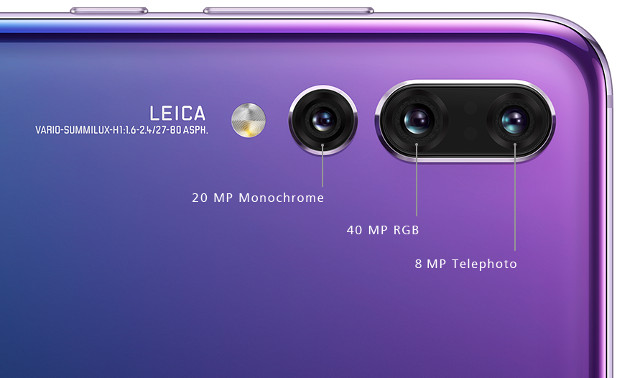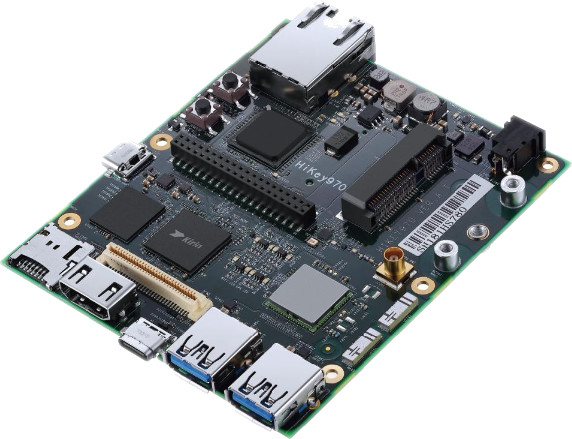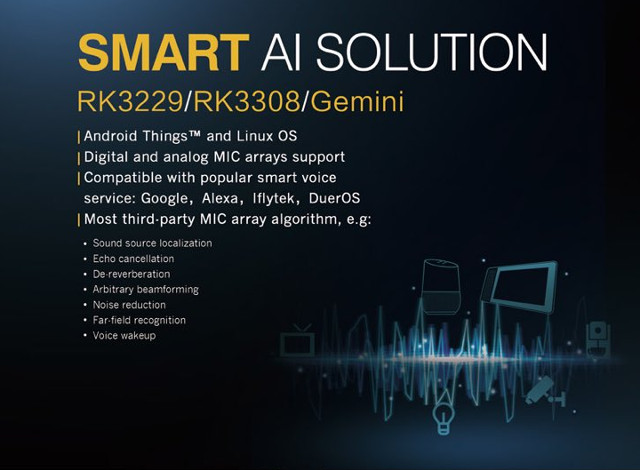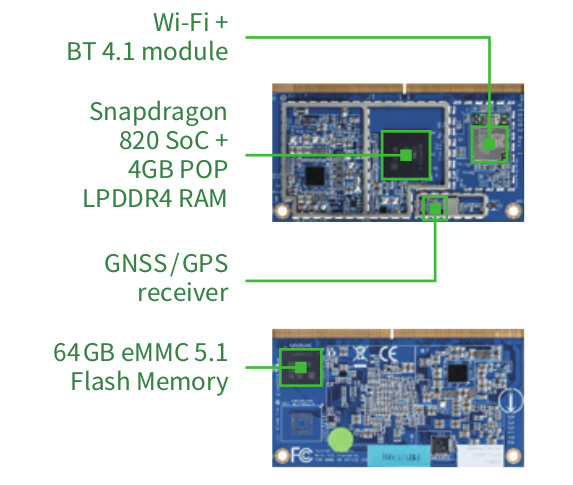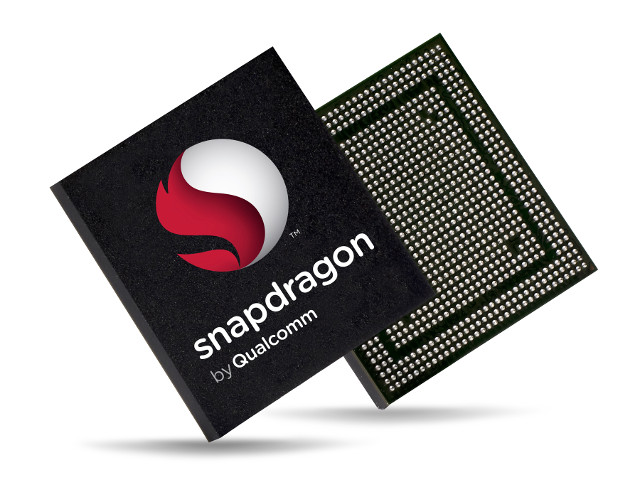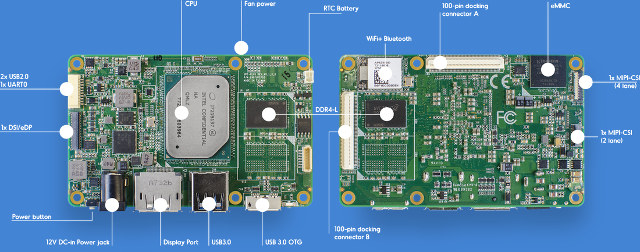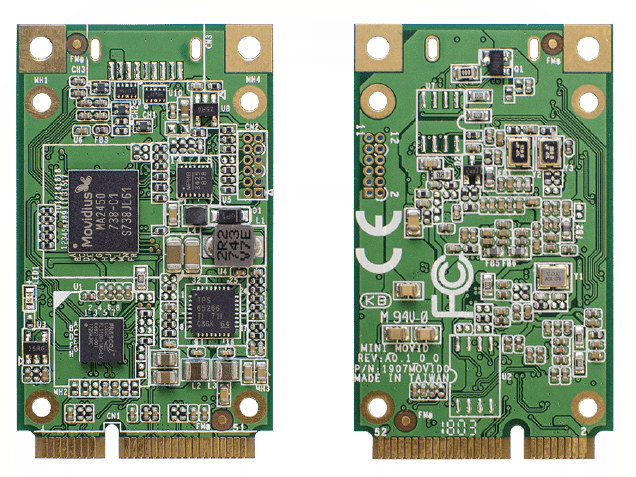We’ve all seen smartphone with dual camera system for better field of depth, better clarity, and the ability to create effects (bokeh) to blur the background of an image. But three rear system? I had not seen any so far, and that’s exactly what Huawei P20 Pro offers with a main camera (40MP), a telephoto camera (8MP), and a monochrome camera (20 MP). Let’s go through the whole specifications first: Display SoC – HUAWEI Kirin 970 CPU octa-core processor with 4x Cortex A73 @ 2.36 GHz, four Cortex A53 @ 1.8 GHz, Arm Mali-G72MP12, Kirin NPU (Neural Processing Unit) System Memory – 6 GB RAM Storage – 128 GB ROM Display – 6.1″ OLED display with 1080 x 2240 resolution Cellular Connectivity Single SIM Card (CLT-L09C model) or dual SIM Card (CLT-L29C model) LTE TDD / LTE FDD / WCDMA / EDGE / GPRS Wireless Connectivity – 802.11ac 2×2 MIMO, […]
Mi MIX 2S Smartphone Launched with Snapdragon 845 SoC, Up to 8GB RAM, 256GB Storage, A.I. Dual Camera
Xiaomi has just unveiled their latest premium with Mi MIX 2S Android smartphone powered by a Qualcomm Snapdragon 845 processor with up to 8GB RAM, up to 256GB storage, a dual camera with artificial intelligence, ARCore technology, wireless charging, and more. Mi MIX 2S specifications: SoC – Qualcomm Snapdragon 845 octa-core processor with four Kryo 385 performance cores @ 2.8 GHz, four Kryo 385 efficiency cores @ 1.8 GHz, Adreno 630 GPU, Hexagon 685 DSP System Memory + Storage options: 6GB LPDDR4x, 64GB UFS flash 6GB LPDDR4x, 128GB UFS flash 8GB LPDDR4x, 256GB UFS storage Display – 5 .99″ Full HD+ (2160 x 1080 pixels) 18:9 AMOLED display Camera Rear Camera – AI dual camera with 12 MP wide-angle + 12 MP telephoto; DxO score: 101 Front-facing camera – 5MP camera AI features enable Face unlock, ARCore technology Wireless Connectivity Cellular 2x Nano SIM slots 43 global bands: GSM: 2/3/5/8 CDMA 1X/EVDO: […]
96Boards Unveils Four A.I. Developer Platforms: HiKey 970, Ultra96, ROCK960 PRO & Enterprise Edition
Many new processors include a Neural Processing Unit (NPU) – aka Neural Network Accelerator (NNA) – in order to speed up talks associated with artificial intelligence, such as object or other patterns recognitions. With Linaro Connect Hong Kong 2018, 96Boards has just unveiled four development boards specifically designed for artificial intelligence solution with Hikey 970 powered by Hisilicon Kirin 970 processor, Ultra96 based on Xilinx Zynq UltraScale+ ZU3EG ARM+ FPGA SoC, and ROCK960 PRO & Enterprise Edition featuring the upcoming Rockchip RK3399Pro processor. Hikey 970 Preliminary specifications: SoC – Kirin 970 with 4x Cortex A73 @ 2.36GHz, 4x Cortex A53 @ 1.8GHz, Arm Mali G72-MP12 GPU, NPU with 256MAC/cycle @ 960MHz System Memory – 6GB 1866MHz, 4 Channel LPDDR4x Storage -64GB UFS storage, micro SD card slot Video Output – HDMI 1.4 up to 1080p60 Camera – 4 lanes CSI + 2 lanes CSI Connectivity – Gigabit Ethernet, wireless module, […]
Rockchip Unveils RK3308 & Gemini Cortex-A35 Processors for Smart Speakers
Rockchip has posted a tweet about smart speakers, specifically about Midea AI speaker based on Rockchip RK3229, but the second image is what caught my eyes, as it reveals two new Arm Cortex A35 processor designed for “Smart AI solutions”, namely RK3308 and “Gemini” Processor. Rockchip RK3308 “mainstream” processor specifications: CPU – Quad core Cortex A35 processor GPU – TBD (maybe none?) Audio Integrated 8-ch ADC and hardware VAD (Voice Activity Detection) module Multi-channel PDM/I2S/TDM audio interface Rockchip Gemini “high-end” processor specifications: CPU – Quad core Cortex A35 processor GPU – Mali Dvalin MP2 GPU Audio – “high-end smart audio solution”; multi-channel PDM/I2S/TDM audio interface Video I/O – LCD screen & camera support Rockchip will provide support for Android Thing and Linux for the processors, as well as integration with MIC arrays boards and popular voice services such as Amazon Alexa, Google Assistant, Baidu DuerOS, and others. Arm Cortex A35 […]
VIA SOM-9X20 Module Powers Smart Recognition and Smart Machine Vision Platforms
At the end of last year, VIA launched SOM-9X20 system-on-module powered by Qualcomm Snapdragon 820 processor coupled with 4GB PoP LPDDR4 RAM, 64 GB eMMC flash, as well as WiFi + Bluetooth module, and a GNSS/GPS receiver. The company introduced two software platform for the SoM and development kit at embedded world 2018: a Smart Machine Vision Platform for manufacturing management and control systems, and a Smart Recognition Platform for facial recognition, object detection, people counting & tracking, etc… VIA SOM-9X20 module specifications: SoC – Qualcomm Snapdragon 820 quad- core processor with 2x high-performance Kryo cores up to 2.15GHz, 2x low power Kryo cores up to 1.593GHz, and Adreno 530 GPU supporting OpenGL ES 3.1/ GEP, GL4.4, DX11.3/ 4, OpenCL 2.0, Renderscript-Next System Memory – 4 GB POP LPDDR4 RAM Storage – 64 GB eMMC 5.1/ UFS 2.0 flash On-module Connectivity Wi-Fi 802.11 a/ b/ g/ n/ ac + Bluetooth […]
Snapdragon 700 Mobile Platform Series To Bring On-Device Artificial Intelligence to Mid-Range Smartphones
Qualcomm has announced a new family filling the gap between the mid-range Snapdragon 600 series, and the high-end Snapdragon 800 series, with Snapdragon 700 mobile platform series which will include on-device AI supported by the Qualcomm Artificial Intelligence (AI) Engine, as well as improvements to camera, device performance and power through Qualcomm Spectra ISP, Kyro CPU, Hexagon Vector Processor and Adreno Visual Processing subsystem (Yes, Qualcomm has a new name for everything, as GPU is now VPS). Snapdragon 700 Mobile Platform Series highlights: Artificial Intelligence – Multi-core Qualcomm AI Engine delivering up to 2x improvements for on-device AI applications compared to the Snapdragon 660 Mobile Platform. Camera – Qualcomm Spectra ISP will allow for better photos in different lighting conditions, slow motion capture, and improvements thanks to AI processing. Performance and Battery life – The new Qualcomm Spectra ISP, Kryo CPU and Adreno Visual Processing subsystem in 700 series will […]
UP Core Plus Board To Support AI Plus FPGA and AI Net Ethernet Expansion Boards
We’ve just written about UP AI Core mPCIe card part of the new AI Edge family from UP Board, but other members will soon be released including UP Core Plus board, that builds upon UP Core Cherry Trail board launched last year, with a choice of Intel Atom x5/x7, and Celeron/Pentium Apollo Lake processors. The form factor is different, but just like the first UP Core board, the Core Plus board supports expansion boards via docking connectors such as the Net Plus Ethernet expansion, and the AI Plus expansion board with Intel Cyclone 10 GX FPGA. UP Core Plus specifications: SoC (one or the other) Intel Atom x5-E3940 (2M Cache, up to 2.00 GHz) Intel Atom x7-E3950 (2M Cache, up to 2.00 GHz) Intel Celeron N3350 (2M Cache, up to 2.50 GHz) Intel Pentium N4200 (2M Cache, up to 2.50 GHz) System Memory – 2GB, 4GB or 8GB on-board DDR4L-2400 […]
$70 UP AI Core mini PCIe Card Features Intel Movidius Myriad 2, Supports Tensorflow and Caffe Frameworks
AAEON’s Up Board has given us some affordable Intel development boards over the years with products such as the Cherry Trail based UP Board, or Apollo Lake powered UP Squared board among others, that are competitively priced against equivalent Arm development boards. The company has now launched a new UP AI Edge family, which will include hardware based on Intel Altera FPGA or Intel Movidius VPU (Vision Processing Unit). Their first product is based on the latter, more exactly Movidius 2 2450 VPU, and instead of being a standalone board, UP AI Core is a mini PCIe card that can fit into any 64-bit Intel board or computer. UP AI Core card specifications: SoC – Intel Movidius Myriad 2 2450 VPU System Memory – 512MB DDR SDRAM Mini PCIe edge connector Dimensions – 51 x 30 mm Host computer/board requirements System Memory – 1GB RAM or more Storage – 4GB […]


